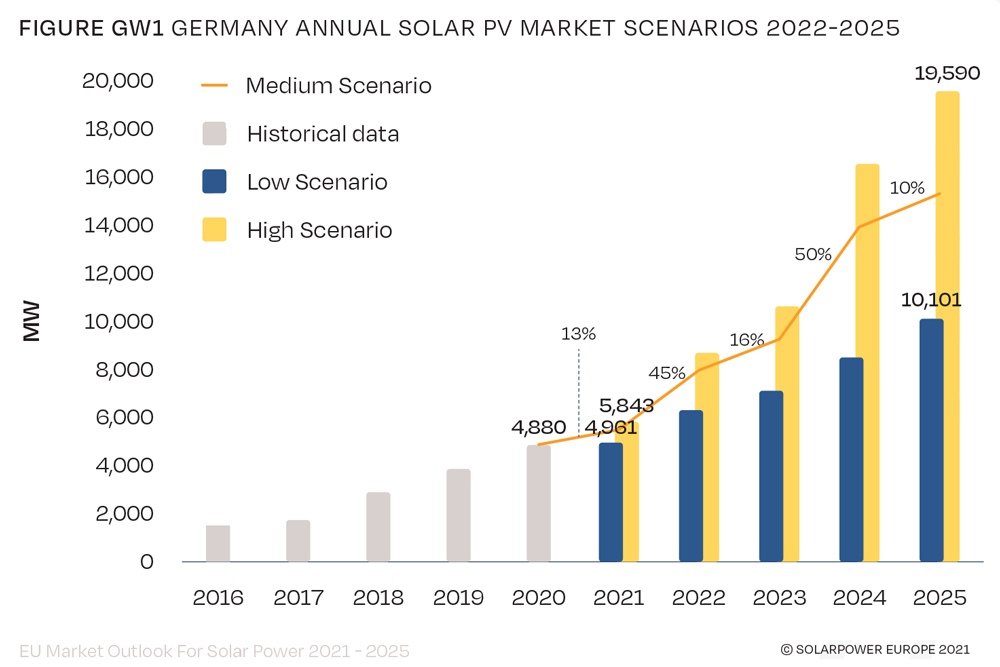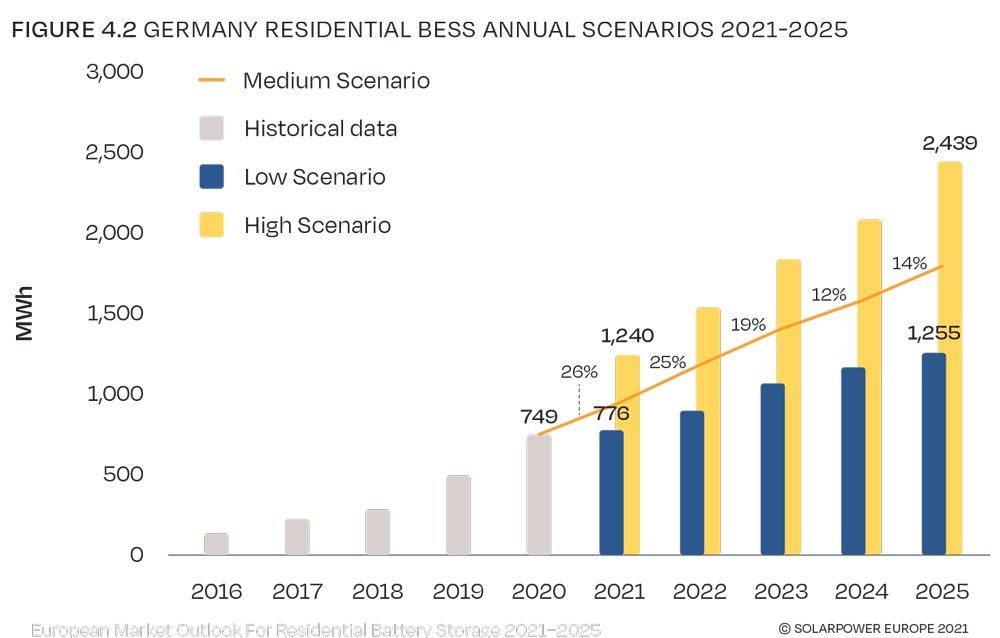Historically, the German market for PV installations and related storage batteries has always been the biggest in Europe and things haven’t changed last year either.
In Germany, the installations of PV systems have begun to grow dramatically since 2000, the year in which the first incentive based on feed-in tariff for the energy injected into the grid for a duration of 20 years came into force by the Federal Government.
Over time the incentives have changed for photovoltaic systems, but those for batteries have also been added as early as 2013, so many years earlier than in other country in Europe.
Installations, historical data of 2020: 4.880 MW of PV and 749 MWh storage
The historical data confirmed to 2020 are 4.880 MW for photovoltaics and 749 MWh of installed storage capacity in the specific residential systems.
Further regulatory improvements are expected for the entire renewables sector
The new “green” government sees in the hands of members of the German Green Party (FPD), the main ministries related to industry, agriculture and the new united ministry of economy and climate, so we can expect it for the future other regulatory improvements for all renewables and other related sectors to them such as e-mobility.
Target in 2030 to reach 200 GW cumulative PV and to close coal plants
The old Renewable Energy Act 2021 (EEG 2021) indicated 100 GW of cumulative PV plants as a goal by 2030, while the new government immediately moved the target to 200 GW and in the meantime has indicated the closure of coal plants in 2030 instead of 2038.
Auctions incentive scheme for large plants
The German incentive scheme provides for auctions for large plants, divided by type, i.e. ground plants above 750 kW, on roofs above 300 kW and a mixed auction for wind and PV systems together as well as tenders for storage systems.
Incentives for small systems with batteries up to 30 kW
The new government has also expanded the audience of beneficiaries of the subsidy of residential and small commercial systems with batteries, going from a maximum of 10 kW to 30 kW.
PV modules on all commercial buildings
In addition, a law is being studied that imposes the installation of PV systems on all new commercial buildings, as is already the case on residential buildings, as required by some regions.
Germany: for the next 5 years the largest European market for PV and storage
According to Solar Power Europe: EU Market Outlook For Solar Power 2021 – 2025, Germany will remain the biggest European market for both PV and storage batteries for the next 5 years, the latter especially in the residential sector thanks to relatively high electricity prices, but also to the growing demand for ev-car and ultimately also for the exit of many PV systems, after 20 years, from the feed-in tariff incentive.
Solar Power Europe expects to exceed 10 GW of PV by 2023
Expectations are strong for PV, in its Outlook, Solar Power Europe expects to exceed 10 GW/year by 2023 in the high scenario. With the average scenario, at the end of forecasts in 2025, they aspect a market of 15 GW annually.
Expectations for BESS storage systems
As far as BESS systems are concerned, the standard expectations are of double-digit growth up to 2025, even at a less marked rate than 2022/2023 but which will also lead to 1.000 MWh of residential storage per year in the average scenario.








